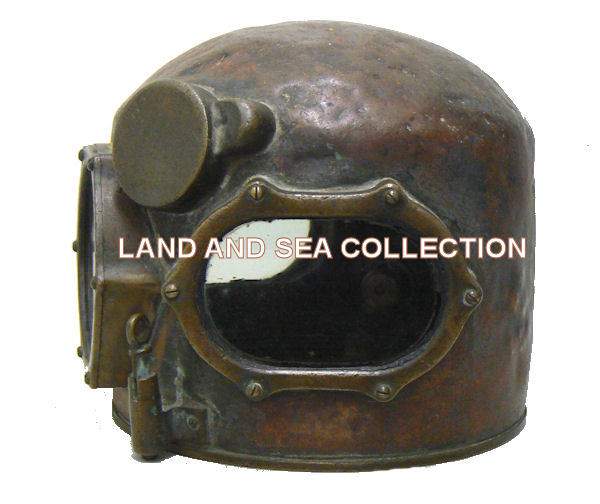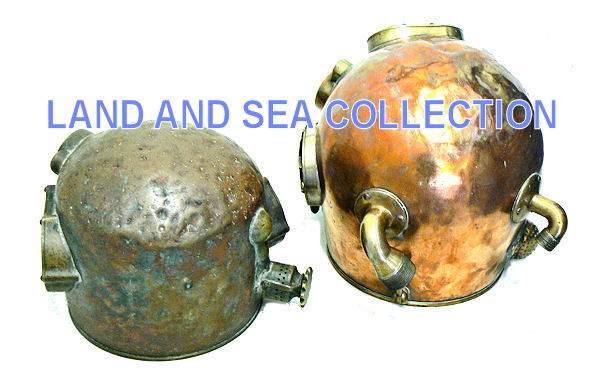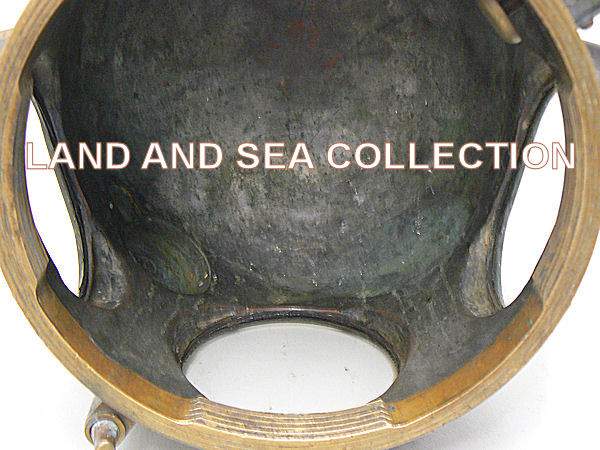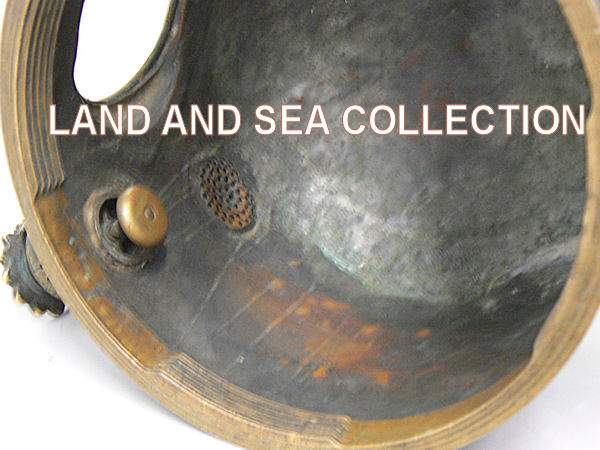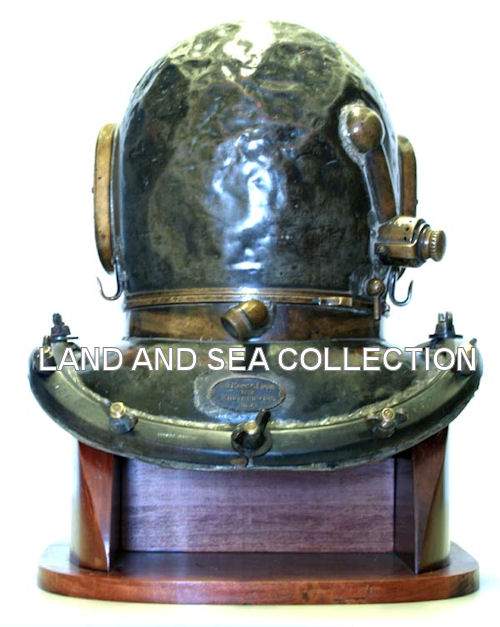ORIGINAL Art McCRAY
DIVING HELMET 1943
By MORSE
GUARANTEED AUTHENTIC
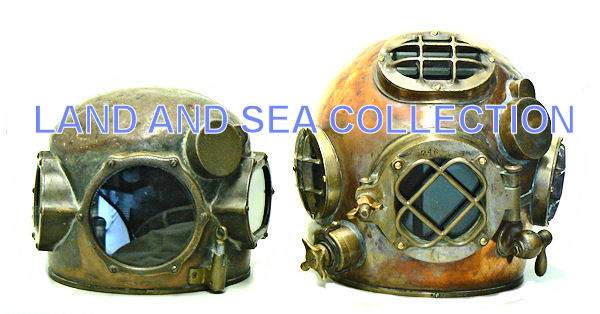
Found in a storeroom in Florida!
Presented is one of the few original
McCray diving bonnets made shown alongside a U.S. Navy MK V bonnet which illustrates it’s reduced volume. No
breast plate is included. There are various stories of how many in total were produced. Of the original group, some
sources say 8, 9, and one person said as many as 20 were made. No one knows how many have survived. The best available information is from Ken Downey of Morse Diving who reports that McCray had the bonnets spun on
the West Coast, and then sent to Morse for finishing where all the parts were installed.Each bonnet was fitted with a used breast plate adapted for a neck or breast
feed air supply, and assigned a Morse serial number. Based on Morse records 12 of these complete helmets were made. Ken
says Morse records show this one was made as a “neck feed” for Walter McCray in a lot of five on Dec
21, 1943. Walter Arthur McCray was the son of long time diver Walter McCray. The son was known as “Art”. The Morse
Diving certification will accompany the bonnet.
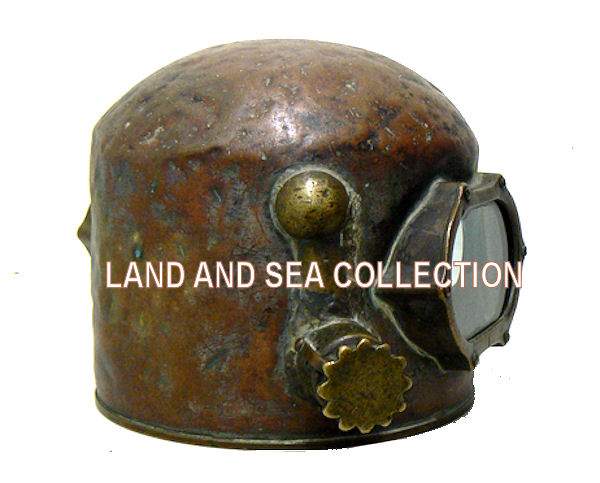 |
Right side with exhaust |
The McCray family story is a legend. They were a family of divers operating in
the Pacific Northwest out of Seattle, WA, and descended from seafarers. Art McCray designed this very small flat
top helmet in the 1940’s with a large neck ring. The result was a bonnet that reduced buoyancy and a size that allowed a
diver to get into tight spaces, getting his face up close to the work.Art’s original design, of which this is one of a very few, consisted of this
low volume, flat-topped-pot shaped bonnet. The air supply was at the back of the neck ring. The air passes through a channel
in the neck ring to the front of the helmet and is directed upward across the front port and the diver’s face. Hence, no vents
can be seen inside the hat. This design also needed less air to circulate and clear the carbon dioxide than did
a traditional helmet. The flat-topped bonnet was used only on the first few McCray helmets, but the cylindrical shape of the
hat with equal diameter neck ring remained the same.
|
|
|
Lock and speaker housing on right side |
The cast brass port frames have a scalloped shape where the mounting screws are located. McCray spun the tops and sent them
to A.J. Morse in Boston for finishing using used breast plates. From this beginning, Northwest divers modified and developed
other helmets to meet their needs so there are many variations in design which
have resulted in helmets being known as McCray style, McCray type, or Pacific Northwest helmet.
There are also Morse recreations
available for around $5,200.00, but they lack the historical significance of an original. Go www.morsediving.com
SPECIFICATIONS:
Front port 6” diameter Side
ports 6 ½” x 4” ½” flange Speaker never fitted
Overall height 9 ¾” Neck
ring 10” diameter Weight
15 lbs
air inlet on back of McCray. The breast plate supplies the air.
This
bonnet will make an outstanding addition to any serious collection of diving helmets and gear!
This picture of Art McCray was taken in 1953 where he is holding
a hat with this style speaker housing in his right arm. By some quirk of fate, might it be this one? FYI, Deep, Dark and Dangerous: On the Bottom with the Northwest Salvage … – Google Books Result In this book is a particularly gripping piece of information that tells how Art McCray
brought his father’s lifeless body to the surface, and the next day returned to the job to work.
The book is highly recommended, and a copy will be given to the new owner of the helmet offered.
A speaker was never fitted
12 bolt Commercial helmetNo breast plate is included.
